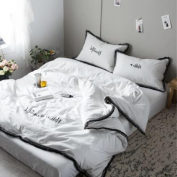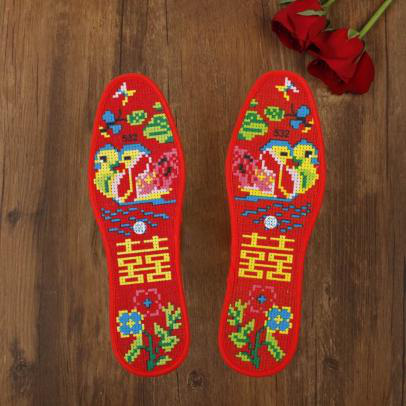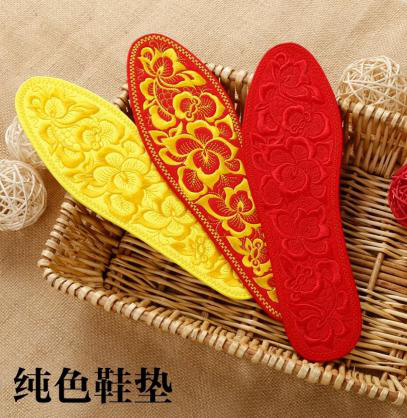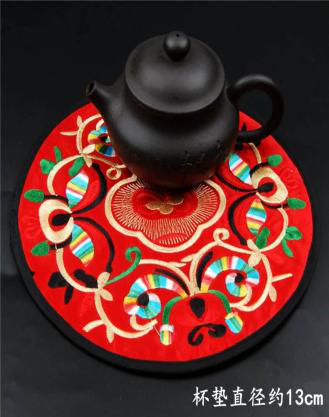How about new environmentally friendly fibers for home textiles? Environmentally friendly fiber refers to the “zero pollution†and completely ecological fiber in the process of production, processing, finishing, and disposal. According to the source of the fiber, it can be divided into environmentally friendly natural fibers and environmentally friendly chemical fibers. 1. Environmentally friendly natural fiber Environmentally friendly natural fibers mainly include colored cotton fibers, kapok fibers, and apocynum fibers. Colored cotton fiber is a new type of cotton that uses biogenetic technology to insert different color genes into cotton to produce color when it is spun. In the production and processing of fiber, there is no need for chemical processing such as bleaching, printing and dyeing, which will not affect human health. It is a green and environmentally friendly fiber. It is suitable for making home textile products such as towels and bedding that are in direct contact with the skin. Kapok fiber is a kind of wild fruit fiber. It has the reputation of “cassette cashmereâ€. It has been used as a floc filling material since ancient times. It is difficult to spin because of its special structure. It has not been widely used, but at Donghua University. With the joint efforts of scientific research institutes, kapok fiber has broken the millennium taboo, not only overcomes the shortcomings of the compression elasticity of the floc filling material, but also makes it possible to separate yarn into yarn by the technical transformation. At the 14th China International Home Textiles Expo There are already exhibits of kapok down products. Kapok fiber has the advantages of thin wall hollow, light weight, warmth, mildew, no smashing, smashing, sterilization, etc. It is the preferred fiber material for bedding, and is also suitable for the preparation of various towel fabrics. Apocynum venetum fiber is a new type of natural fiber raw material with health care function. In addition to the characteristics of moisture absorption, breathability and high strength shared by hemp fiber, it also has the properties of good gloss and hand feeling and blood pressure lowering. How about new environmentally friendly fibers for home textiles? Therefore, it can be used in the manufacture of home textile products such as bedding, towels and pals. Second, environmentally friendly chemical fiber 1. New regenerated cellulose fiber The new regenerated cellulose fibers mainly include tencel fibers, modal fibers and bamboo fibers. Tencel fiber is made from coniferous wood and its wood pulp is dissolved in ammonium oxide solvent. The solvent used in the preparation process is non-toxic, non-polluting, and can be recycled more than 99%. The fiber has high strength, drapability, breathability and moisture permeability which are not possessed by viscose fiber, and can be used for towels, beds, bags, etc. Development and use of home textile products. Modal fiber is a high-moisture modulus regenerated cellulose fiber produced by Austrian Lenzing Company based on European eucalyptus. It has the characteristics of moisture absorption, breathability, softness and smoothness, and good dimensional stability. It can be used in bedding and towel products. Bamboo fiber is divided into two types: bamboo fiber and bamboo fiber. Natural bamboo is used as raw material to extract bamboo cellulose and processed by physical methods such as cooking. It has the characteristics of good gas permeability, strong instantaneous water absorption and good wear resistance. It also has natural antibacterial, antibacterial, antimony, deodorant and anti-ultraviolet functions. It is suitable for the development and use of bedding, kitchen cleaning cloth, handkerchief, mat, carpet, and various towel products. 2. Degradable fiber Degradable fiber mainly includes soybean fiber, corn fiber, milk fiber and the like. It is a kind of polymer material processed from plants or animals. These fibers are not only renewable, but also biodegradable under natural conditions, do not pollute the environment, and these fibers have excellent properties such as moisture absorption, breathability, and good contact with the skin. Especially suitable for the development and use of baby bedding products. Third, functional fiber Functional fiber refers to a fiber that is endowed with special functionality in addition to its practicality. Such as flame retardant fiber, antibacterial fiber, far red line fiber. Flame-retardant fibers generally refer to fibers having a limiting oxygen index of more than 26% when burned. The textile fibers used in home textiles are almost all organic polymer materials, and most of them are decomposed at temperatures below 300 ° C, and there are flammable gas generations and volatile liquids that exacerbate fire accidents when burned. According to reports, in the fire accidents in urban and rural areas, fires caused by textile burning can account for more than 40% of the total number of accidents, resulting in a death toll of about 61%. Therefore, some developed countries have formulated relevant laws and regulations on the flame retardancy of decorative fabrics as early as the 1960s. However, there is no clear requirement for the flame retardancy of decorative fabrics in China. Therefore, increasing the flame retardant function of home textile products can not only effectively reduce the incidence of fire accidents, but also increase the added value of products and participate in international competition. Flame retardant fiber is mainly used in the development of curtain fabrics, yarn fabrics, fabric products, carpets, and some bedding products. Embroidery daily necessities
Almost everyone in the modern pursuit of quality of life, especially those urban families, for the most basic household products are very aware of the brand, especially personal daily necessities. With the emergence and development of embroidery products, and in view of people's health awareness of silk and their own health, embroidery has become the new darling of the market, widely loved by everyone. Aisha•Lee Hui embroidery development so far, the scale has been formed, the product category more, including daily necessities are also distinctive, rich in variety, drawn mostly birds and insects fish, folk and traditional ornamentation, quite festive color. We have a professional design team dedicated to creating different products, using the modern perspective, aesthetic view of traditional culture, and with the market-oriented model, to promote and derive.
Aisha•Lee embroidery products out of respect for the traditional process, our products are after numerous folk artists perception of the natural environment, the result of the idea. Each of our products is an affectionate piece of embroidery embroidered by countless needles.
Hand Embroidery Of Daily Necessities Hand Embroidery Of Daily Necessities,Embroidery Of Daily,Embroiderd Hanging Paintings,Hanging Paintings Embroidery Haiyuan Aisha Handicrafts Company Limted , https://www.nxembroidery.com
There are many varieties of new textile materials, which can be divided into environmental protection and functional types according to the performance and characteristics of their home textile products.
Embroidery is one of China's outstanding national traditional crafts. China was the earliest country in the world to find and use silk, and people started reeling and reeling four or five thousand years ago. With the use of silk, silk production and development, embroidery process is also gradually emerging, and involves all aspects of human life.




